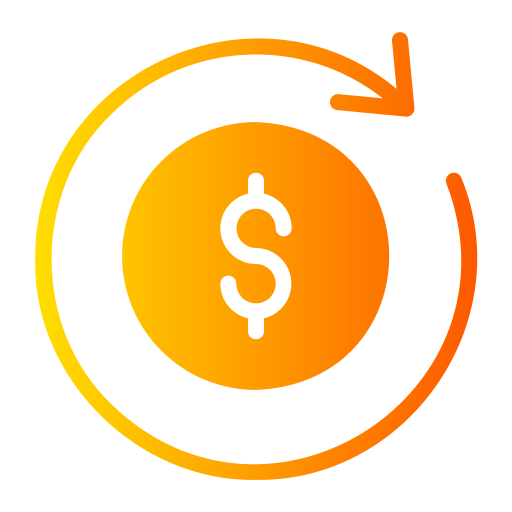Dithering is a digital audio processing technique that is used to reduce quantization error and improve the overall sound quality of an audio recording. It is an essential part of the audio production and mastering process, and is used to smooth out the transitions between different levels of digital audio signals.
In this article, we will explore the technical details of dithering, its history and evolution, and the various types of dithering algorithms that are used in audio production today. We will also discuss the role of dithering in audio mastering and its impact on the overall sound quality of an audio recording.
Whether you are a beginner or an experienced audio engineer, understanding dithering is crucial for achieving the best possible results in your audio projects.
Jump To Section
1. What is dithering?
2. The history of dithering
3. Types of dithering
4. Dithering and audio quality
5. Using dithering in audio production and mastering
At a high level, dithering is a method of reducing quantization error in digital audio. Quantization error is an inherent problem in digital audio, which occurs when a continuous audio signal is converted into a series of discrete digital samples. These samples are then encoded using a finite number of bits, which means that they can only represent a limited range of values. This quantization process inevitably leads to some loss of information, and the resulting error is known as quantization noise.
Dithering is used to minimize the audibility of this quantization noise by adding a very low-level noise signal to the audio signal before it is quantized. This noise signal is carefully designed to be as inaudible as possible, but it has the effect of effectively "randomizing" the quantization error, making it less noticeable to the human ear.

The first step in the dithering process is to choose an appropriate dithering algorithm. There are several different types of dithering algorithms available, each with their own unique characteristics. Some popular examples include triangular dithering, rectangular dithering, and shaped dithering.
Once the dithering algorithm has been selected, it is applied to the audio signal by adding a small, random noise signal to the signal before it is quantized. This noise signal is usually generated using a pseudo-random number generator, and it is carefully shaped and filtered to ensure that it is as inaudible as possible.
The dithered audio signal is then quantized using a finite number of bits, just like any other digital audio signal. However, the added noise signal has the effect of "smoothing out" the quantization error, making it less noticeable to the human ear.
The origins of dithering can be traced back to the early days of digital audio, when audio signals were first being recorded and reproduced using computers. One of the main challenges that audio engineers faced at the time was the limited resolution of digital audio signals. Early audio hardware and software could only encode audio signals using a finite number of bits, which meant that they could only represent a limited range of values. This inevitably led to some loss of information, and the resulting error was known as quantization noise.
To reduce the audibility of this quantization noise, audio engineers began experimenting with different techniques for adding a low-level noise signal to the audio signal before it was quantized. This noise signal was carefully designed to be as inaudible as possible, but it had the effect of effectively "randomizing" the quantization error, making it less noticeable to the human ear. This technique became known as dithering.

In the early days of digital audio, dithering algorithms were relatively simple and crude, and they often resulted in noticeable artifacts and distortions. However, as digital audio technology has advanced, so too have the dithering algorithms that are used to process audio signals. Today, there are many different types of dithering algorithms available, each with their own unique characteristics. Some popular examples include triangular dithering, rectangular dithering, and shaped dithering.
In addition to the development of new dithering algorithms, the use of dithering has also evolved over time. In the early days of digital audio, dithering was primarily used to reduce the audibility of quantization noise when working with low bit depths. However, as digital audio technology has improved and the use of higher bit depths has become more common, dithering has also been used to preserve the integrity of the audio signal and improve overall sound quality. Today, dithering is an essential part of the audio production process, and it is used to ensure that audio signals can be accurately reproduced on different playback systems and at different bit depths.
One of the most common types of dithering algorithms is triangular dithering. This algorithm works by adding a triangular-shaped noise signal to the audio signal before it is quantized. The main advantage of triangular dithering is that it is relatively simple and easy to implement, and it produces good results in many situations. However, triangular dithering can sometimes produce noticeable artifacts, especially when working with high bit depths.
Another popular type of dithering algorithm is rectangular dithering. This algorithm works by adding a rectangular-shaped noise signal to the audio signal before it is quantized. The main advantage of rectangular dithering is that it is highly efficient and produces good results in many situations. However, like triangular dithering, rectangular dithering can sometimes produce noticeable artifacts, especially when working with high bit depths.
A more advanced type of dithering algorithm is shaped dithering. This algorithm works by adding a noise signal to the audio signal that is carefully shaped to minimize the audibility of quantization noise. Shaped dithering algorithms can produce excellent results, with minimal artifacts, but they are generally more complex and computationally intensive than other types of dithering algorithms.
In addition to these three types of dithering algorithms, there are many other dithering algorithms available, each with its own unique characteristics. Some popular examples include Floyd-Steinberg dithering, Burkes dithering, and JJN dithering.

So, which type of dithering algorithm is best? The answer to this question depends on the specific needs and goals of your audio project. In general, triangular dithering and rectangular dithering are good choices for most situations, especially when working with low bit depths. Shaped dithering algorithms are a good choice when the highest possible audio quality is required, but they may be overkill in many situations.
One of the main benefits of dithering is that it can significantly improve the overall sound quality of an audio recording. By minimizing the audibility of quantization noise, dithering helps to preserve the integrity of the original audio signal and reduce the likelihood of annoying artifacts and distortions.
In addition to improving sound quality, dithering is also important for ensuring that the audio signal can be accurately reproduced on different playback systems. Different playback systems have different dynamic range and noise floor characteristics, and dithering helps to ensure that the audio signal can be properly reproduced on these systems without causing clipping or other problems.

Finally, dithering is also crucial for achieving optimal results when working with audio at different bit depths. In the digital audio world, the bit depth of an audio signal determines the range of values that can be represented. Higher bit depths allow for greater precision and dynamic range, but they also require more storage space and processing power. Dithering helps to minimize the loss of information that occurs when reducing the bit depth of an audio signal, making it an essential tool for optimizing audio quality and efficiency.
One of the key considerations when using dithering in audio production and mastering is its impact on the overall sound quality of an audio recording. Dithering is used to reduce quantization noise and improve the overall sound quality of an audio signal, but it can also have some trade-offs and limitations that are important to understand.
One of the main benefits of dithering is that it can significantly improve the overall sound quality of an audio recording. By minimizing the audibility of quantization noise, dithering helps to preserve the integrity of the original audio signal and reduce the likelihood of annoying artifacts and distortions. This can be especially important when working with audio at low bit depths, where the quantization noise can be more noticeable.
However, it's important to note that dithering is not a panacea for all audio quality problems. While dithering can help to reduce quantization noise and improve the overall sound quality of an audio signal, it cannot completely eliminate all types of noise and distortion. In addition, dithering can sometimes produce its own artifacts and distortions, especially when used excessively or when working with high bit depths.

One key factor is to use dithering sparingly, only when it is needed. While dithering can be a useful tool for improving the overall sound quality of an audio signal, it is not always necessary, and in some cases it can even degrade the sound quality if used unnecessarily. As a general rule, it is best to use dithering only when working with audio at low bit depths, or when the audio signal contains a significant amount of quantization noise.
Finally, it's important to experiment and listen carefully when using dithering. Different dithering algorithms and settings can produce very different results, and the best choice for your audio project will depend on your specific needs and goals. It is important to listen carefully to the audio signal and adjust the dithering settings as needed to achieve the best possible results.
In conclusion, dithering is an essential technique that is used to improve the overall sound quality of digital audio recordings. While it is an effective way to minimize the audibility of quantization noise and preserve the integrity of the original audio signal, it is important to use dithering sparingly and choose an appropriate algorithm to achieve the best possible results.
Whether you are a beginner or an experienced audio engineer, understanding dithering and how it works is crucial for producing professional-quality audio projects.
If you are looking for high quality samples and presets check out our collection here.









































